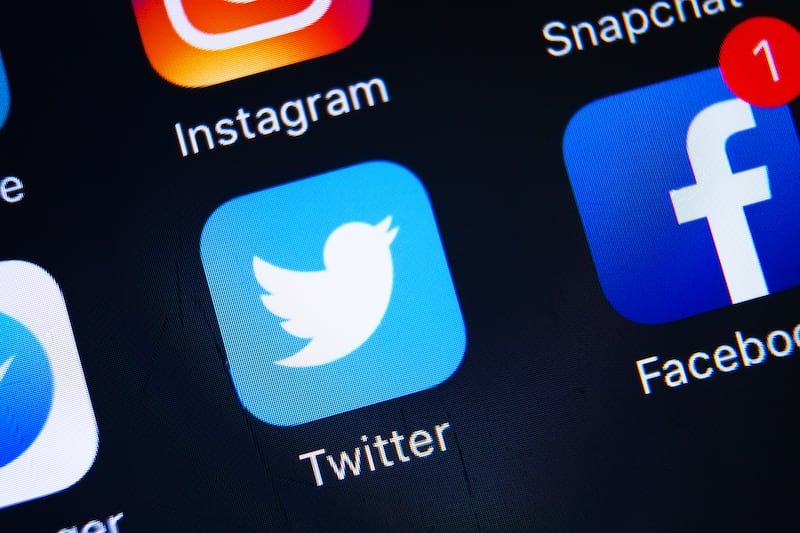It’s that time of year when everyone makes new year’s resolutions that will be broken within days. But there are some tech resolutions that could be worthwhile making – and keeping. Perhaps you want fewer smartphone interruptions or would like to increase your security. Maybe the email spam has finally worn you down. Here are some suggestions to help make 2023 a healthier tech year.

Embrace two-factor authentication
What stands between your account and a malicious user who wants to spam your friends with dodgy sunglasses ads could be a simple security feature. Two-factor authentication adds another layer to your security arsenal, requiring not only your password but a one-time code or authentication from a trusted device to log in.
It’s not foolproof but at least it puts up a barrier between your private information and those who would like to gain access to it for their own ends.
There are downsides, though. Regardless of what method you go for, you will likely need a second device simply to log in, so if your phone or tablet is out of power, you might find that you are locked out of accounts until you can get it up and running again. But the alternative is giving bad actors potential access to your details, so that has to be weighed against the inconvenience factor.
Guard your email address
Just because a site asks for your email, it doesn’t mean you have to hand it over. Or at least not the real one anyway.
But don’t just make up an email address; you may be transferring your spam messages to someone else. Instead, set up an email for all such marketing mail, a free address on Gmail or Outlook, for example.
Another option is to use an email service that offers aliases. While Apple had long offered this particular service to its customers, recent developments have seen it add a “hide my email” feature for subscribers to iCloud+ that generates a random email for a website. The email addresses are saved to your account so you can search back through them and deactivate the email addresses you no longer need, thereby consigning all future communications to the great bounce back in the ether.

Step back from social media
Twitter has become a weird dumpster fire of Elon Musk praise, Facebook is a bit stale and Instagram is forcing us towards Reels; the upshot of it all is that social media seems a bit less addictive these days. That’s a good thing – less time on social media equates to more time elsewhere, potentially doing something better for your mental health than doom-scrolling.
We all know that Instagram isn’t real life and yet when we are bombarded with images of the perfect life, the perfect family, the perfectly filtered faces, it can eventually seep into your outlook. Delete social media apps or use screen time restrictions on Apple and Google’s mobile operating systems to limit your time spent on social media. At the very least, revoke the various apps’ permission to send notifications to your mobile devices, ensuring you won’t get drawn back in on a regular basis.
The bonus of stepping back from social media? You won’t be tempted by the latest “must have”, whether it is tech related, beauty products or some impossible kitchen gadget that promises to change your life (they rarely do).
Keep up to date
We don’t mean with the news, although that’s not necessarily a bad resolution to make. In this case though, we are talking about software updates. Keeping up to date with updates for your mobile devices and whatever laptop you might use is always a good resolution to make. While there are fears of bad updates that can cause problems with your devices – and they have happened in the past – the reality is that you are more at risk from the security holes that these updates solve.
Ban the phone – and your tablet, and your smartwatch – from the bedroom
While the debate over the harmful effects of blue light on your body’s rhythms is ongoing, there is one thing that isn’t in any doubt: having devices in your bedroom is a distraction. And that, in itself, could be affecting your sleep. Have you found yourself stuck in a TikTok loop past midnight? Or woken briefly at 3am, and decided to just see what’s going on before you try to get a few more hours of shut eye?
Banning the phone from the bedroom will take away that temptation. While you are at it, ditch the tablet and the smartwatch too, preventing any notifications reaching you by stealth. Invest in an alarm clock instead, or if you aren’t willing to forgo all technology, you could use a smart speaker – with the microphone off, of course.

Silence the chatter
While we are on the topic of creating peace for yourself, it’s time to get strict on notifications. Those little pop-ups are helpful for some apps, but for most, they are simply noise.
You can also use the various focus modes on devices to help minimise the interruptions to your day, regardless of whether you are working or having some downtime. The iPhone, for example, allows you to set focus modes for different scenarios, and they can be set to automatically run based on the time of day, your location or even the apps you are using. So when you walk into the office, your focus mode can be set to work, filtering out certain apps or calendars, only allowing work-focused information to your device.
Clear out your old tech
Have a look in your tech junk pile and see what’s sitting there taking up space. Old phones, headphones, hard drives and routers are just some of the items sitting in drawers, unused, unwanted and wasting resources that could be put to good use.
We are sitting on a mountain of electronic waste and inside these devices are valuable metals and elements that can be recycled to make new devices, rather than mine for the same metals.
On one hand, you can see why some people would hang on to devices. Old tech can sell for big money, and who knows if that smartphone you have might one day be a collector’s item that could sell for thousands. But for the most part, we do know. It’s highly unlikely that your scratched, beaten-up iPhone 4 that stopped working after you dropped it for the fifth time is going to set any records at the auction house. Neither is that chewed cable with the strange yellow mark that you are pretty sure is a fire hazard in waiting.
And we could lay a pretty solid bet that, to borrow the wisdom of Marie Kondo, none of these items “spark joy”. Do yourself, and the planet, a favour: get rid.
Be present
Often in our rush to “capture the memories” we forget to be part of them.
Have you been to a concert lately? You end up watching it through the screen of the person in front, who is recording the entire thing or at least large chunks of it. It’s a sea of smartphones – and the occasional iPad.
There are two things happening here. Either you are so busy recording the show that you forget you are supposed to be there to enjoy it in real-life technicolour, or you aren’t watching what you are recording and are capturing a couple of hours of blurry images and distorted audio. Neither are likely to feature on your “must-watch” list, and all they will do is take up precious space on your device and, assuming you back up regularly, in the cloud in a data centre somewhere.
If you went to a concert in the 1990s, you were frisked at the door for your point-and-shoot camera. These days, it’s harder to do as almost everyone setting foot in the place has a camera on them. There are some events that have got around that. Certain artists have specified no phones, which means you turn them off or silence them before the show, and don’t touch them again until the band is leaving the stage. Ignore this request, and you may be asked to leave.
Others have brought in a system where your smartphone is “locked” into a bag for the duration of the show and only released at the end.
These are few and far between, though. Perhaps it’s a good idea to keep it to a few photos and actually enjoy the moment.





















